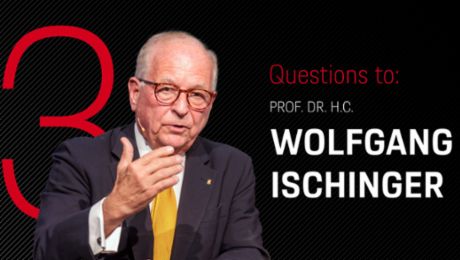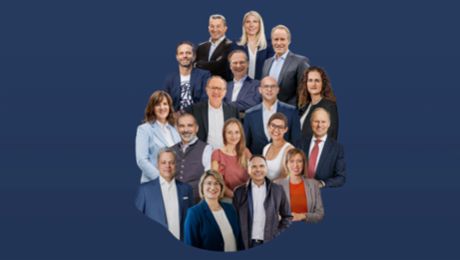At a digitalization summit in December 2022, Dr. Robert Habeck, the German Federal Minister for Economic Affairs and Climate Action, described Catena‑X as a “lighthouse project in industrial policy for digitalizing supply chains.” That was probably not an understatement. The automotive industry is hoping the new and expandable data ecosystem will lead not only to more resilient, sustainable, and economical supply-chain structures but also to new business models. As ever more companies in the automotive industry collaborate in Catena‑X along with their dealers and outfitters, the shared data space will also be serving as a blueprint for analogous platforms in other sectors. This is because the principles, applications, and standards developed by Catena‑X are essentially universal and can therefore be easily modified to fit the value-adding processes of other industries.
Risks are involved when components are sourced from around the globe, especially when it comes to raw materials and preliminary products. One striking example was when the Ever Given freighter ran aground in the Suez Canal in March of 2021 and ended up blocking the crucial artery of maritime trade. Frank Göller, Head of Digital Production & Processes at Volkswagen AG, is well aware of the consequences. “If I’m forced to determine that 20,000 electronic components won’t be delivered on time, in a worst-case scenario I could end up selling 20,000 fewer cars.”
Transparency from raw materials to recycling
The unintended blockage of the Suez Canal, the COVID pandemic, the repercussions of the Russian war on Ukraine — these unanticipated developments have shown that it is almost impossible to rapidly readjust capacities beyond those already established within supply structures. In many cases this is due to extensive gaps in accessible data. Most companies have traditionally only provided their information to immediate customers or direct suppliers. However, complex components often contain products from numerous sub-suppliers. The traditional data streams, in other words, are hardly capable of allowing components and capacities to be rapidly and directly tracked.
Moreover, companies use a wide range of different software solutions, and each individual company defines its own data standards. As a result, different sources of information are often incompatible with each other. Furthermore, some companies still operate the requisite interfaces on a manual basis. That makes it virtually impossible to synchronize data for preliminary products in the value chain. The transparency needed to respond quickly to crises simply does not exist.
The automotive industry wants to change this. Catena‑X is designed to illuminate the entire value chain — from raw material mines and component suppliers to the carmakers themselves. And then on to recycling companies in order to document complete material cycles. This in turn opens the door to new solutions for managing demand and capacities in the supply chain. For example, Catena‑X’s development teams are working on user-friendly apps that can identify capacity problems in real time. “When Catena‑X makes the entire supply chain completely transparent, then I can see which capacities are available and which urgently needed components I can reroute to handle my specific situation,” explains Göller.
But Catena‑X is about more than increasing resilience. It is also about real cost savings, new business models, more sustainable operations, more efficient processes, and optimized quality management. However, achieving the ambitious aims in these areas requires no less than a concerted joint effort on the part of the entire sector — among competitors as well. This is no easy task, especially regarding the crucial issues of data transfer and sovereignty.
European values generate trust
The first reason for confidence in Catena‑X is the fact that many of its principles are not nearly as new as they might appear. They have already proved themselves in other contexts. Gaia‑X, a non-profit organization based in Brussels, formulated the pioneering data-transfer principles back in 2020. Three hundred and fifty companies agreed on the principles of equitable collaboration, interoperability, open-source software, and above all on data sovereignty.
Catena‑X makes use of these widely recognized standards. In order to fully embrace the principle of data sovereignty, Catena‑X dispenses with a central cloud system. “The data remain with the respective companies, without exception,” says Dr. Jürgen Sturm, CIO of the ZF German automotive supply group and one of the Catena‑X pioneers. “Access rights are only granted for specific applications and contexts. Instead of consolidating all the data flows with a single intermediary, we’ve opted for a decentralized solution — which substantially lowers the potential for misuse.”
These guidelines are attracting ever more companies to the idea of exchanging data. In the spring of 2021, some 28 of them founded the Catena‑X consortium on the basis of these “European values.” With around 110 million euros from the German Ministry of Economic Affairs, they developed the first open-source software for a shared data space. Two further entities were added to form the structure that exists today. One is the Catena‑X Automotive Network association, which provides a common umbrella, so to speak, for its 170 members. It defines governance, specifies data standards, and certifies the applications that members can use to process data. The second is the Cofinity‑X operating company, which gives interested parties access to the network. Its marketplace app lets companies use the network and also make their own apps available.
Since the project was founded, development has proceeded rapidly — not least thanks to the more than 100 programmers who have jointly developed both the open-source code and the shared data standards. The consortium was therefore already able to present a pilot version of its platform in April 2023 at the Hannover Messe, a leading industry trade fair in northern Germany. The next milestone — the go-live of Catena‑X services and KITs, the standards defined for tasks such as developing and using data – was reached by Cofinity‑X in October 2023. With tools from Cofinity‑X’s marketplace app, partner companies should be able to analyze supply-chain data in numerous different areas.
Advancing sustainability
Not every field is of equal importance to the players in the automotive industry. “Sustainability issues are figuring prominently in discussions about supply chains right now,” says Dr. Andreas Wollny, Senior Manager Digitalization for the giant BASF chemical corporation. One reason why companies are focusing on the environment and social responsibility has to do with new reporting regulations. In Germany, the Lieferkettensorgfaltspflichtengesetz (Supply Chain Due Diligence Act, or LkSG), which came into effect in 2022, requires larger companies to ensure and document compliance with sustainability standards throughout their value chains. Reporting can of course be done without the benefit of digital data spaces, says Göller. “But if you have to compile your reports manually with Excel, that takes a huge amount of time and will definitely not be very exact.”
The “sustainability reporting” topic could well become increasingly relevant in the next few years. As of 2024, all companies in Germany with more than 1,000 employees will have to demonstrate how they are meeting environmental and social standards — from raw material sources to the end products in car dealerships. That same year, a similar regulation will go into effect in the European Union. Reporting requirements apply not only to the automotive sector but also to every branch of industry. “Our solutions are therefore of interest for all companies that gather sustainability-related data and want to share them with their customers and partners,” emphasizes Wollny.
Catena-X — A successful model for other sectors?
And in fact, the first industry associations from other sectors have already approached the Catena‑X Automotive Network for tips on how to set up systems of their own. The leaders of the Manufacturing‑X initiative could well be the farthest along toward the goal of mapping their industry. It’s clear to experts that other sectors, too, will benefit from the experience gained with Catena‑X. After all, Catena‑X’s principles, applications, and standards are considered essentially universal. Adapted to value chains of other industries, the system could quickly and dependably bring advantages there too.
Attracting smaller companies worldwide
“For Catena‑X to succeed, it’s important to encourage even more enthusiasm for the project in our own industry,” says Sturm. “That also means taking an international approach. The German automotive industry can only be successful on a global basis, which means we want our standards to be applied worldwide.” Göller, as Catena‑X’s vice president in charge of internationalization, is leading the charge here on the world’s major car markets. Successfully so, with one Catena‑X hub already established in France and promising talks underway in the USA, Japan, and China. Although he often faces skepticism at first, Göller’s winning nature — and above all his arguments — are changing the minds of potential critics. “At some point, everyone will realize the benefits that come from being part of this functioning ecosystem,” he predicts.
The big players are frequently the first to recognize the added value from Catena‑X. “The acceptance level among medium-sized enterprises remains a challenge,” grants Wollny. Because highly specialized small and medium-sized enterprises (SMEs) are key players in car production, the system cannot work over the long term without them. Wollny and his colleagues are therefore developing tools tailored to their needs. These include offers with even lower thresholds and solutions of even greater simplicity that can also be used by companies that don’t have their own system administrators. Sturm is even talking about “applications on a plug-and-play principle.”
New business ideas — Investments in the future
Although easy-to-use tools are a necessary condition for expanding Catena‑X to broader target groups, what will ultimately convince decision-makers is the value the system offers to their companies. Higher quality, lower costs, greater resilience, faster and more efficient data management, and better coordination with customer needs — there are many reasons to become part of a larger whole. Potential Catena‑X users should also take strategic considerations into account. Experts agree that the networking approach will soon give rise to previously unimagined business concepts. As such, Catena‑X is also an enormous source of future potential. Wollny is therefore convinced that despite all its successes to date, Catena‑X is only getting started. “Catena‑X gives the industrial world a new, scalable, future-oriented technology that will become ever more relevant in ever more sectors around the globe.”
Dr. Jürgen Sturm: “From 'Ego Systems' to an Ecosystem”
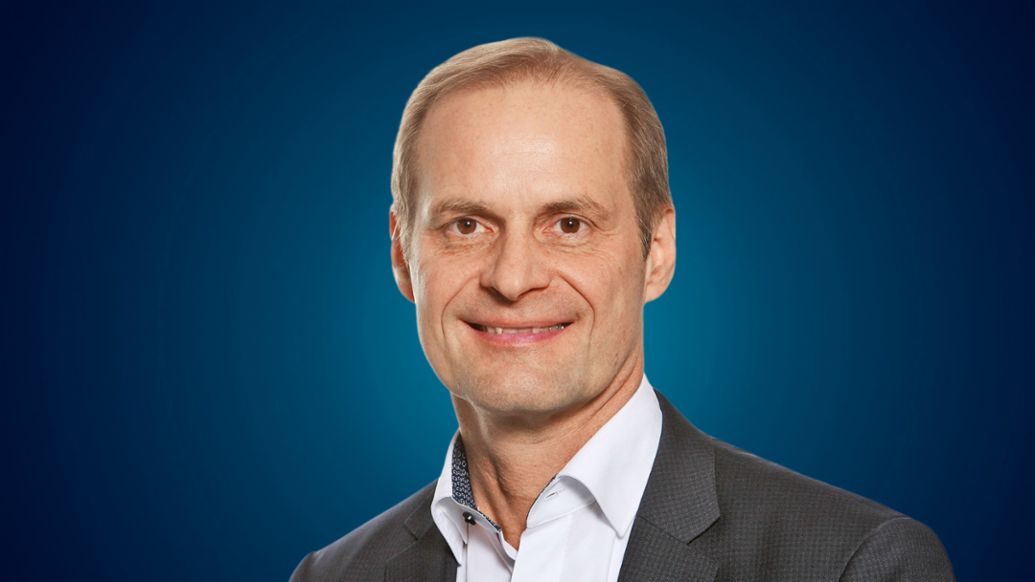
Dr. Sturm has very clear memories of the visions people cherished four or five years ago. “Back then, every big company wanted to build its own cloud and make it available to other companies,” is how he describes the period. The thought model of a company-owned cloud, however, did not go far enough — at least insofar as it consisted of a centralized platform or cloud infrastructure assuming the role of a central intermediary or key node to which all information would flow and which would then process these data on a universal basis and provide them to all users. Most of the visionaries, of course, imagined their own companies in the role of this key intermediary. Dr. Sturm, however, quickly realized that “none of these approaches would work, and instead were doomed to failure.”
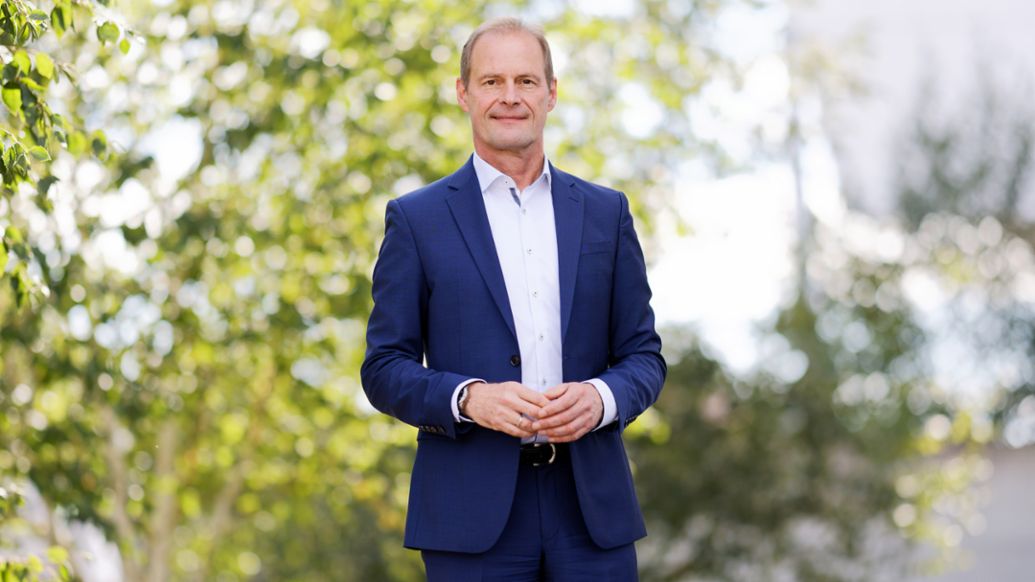
What the early visionaries failed to see was that the supply chains are too complex for a single company to be able to integrate them all into a single central cloud entity. No company can formulate the standards for all the others — and certainly not in a sector as international as the automotive industry. Moreover, there are good reasons for companies not to entrust their most important asset, namely their data, to a single actor. It makes far more sense for each individual owner to retain control of its data and to exchange only the specific information needed for a given application. “Everyone involved first had to grasp the concept,” says Sturm. “We all had to realize that cooperation is the better way forward. Together, we have to move beyond the notion of individual ‘ego systems’ and develop an overarching ecosystem.”
Collaboration was what was needed, as well as technical solutions that could allay the fears of the partners. For example, the fear of exposure, also and especially to one’s competitors. The principles of Gaia‑X formed milestones along the road to the automotive industry’s shared ecosystem. These laid the groundwork for the launch of Catena‑X by a handful of companies in 2021. “It was nothing less than a paradigm shift,” observes Sturm. The partners joined forces to develop everything right from the start, from formulating the task — what do we want to achieve together? — to designing the solutions. “This shared precompetitive basis laid a solid foundation of trust.”
No risks in sharing data?
Because the data from each company have to remain under that company’s control, they are only “mutually accessible in context-sensitive ways,” as Sturm explains. The key component of the new data space is a technology known as eclipse dataspace connector (EDC), which has both a control plane and a data plane. On the control plane, participating companies negotiate which supply chain data are needed for a specific use case. On the data plane, the system then displays the specified data — and only those data. The crucial feature of the system is that the supply chain members enter into contractual relations with other members regarding that specific data set, which eliminates potential ‘ misuse of information right from the start. Catena‑X uses a “one up and one down” principle in its data chain. That means each participant sees only its immediate suppliers and customers, but no further companies either upstream or downstream. Data are only exchanged directly between companies, without a central intermediary.
Catena‑X’s approach is designed to integrate a large number of companies of different sizes. “As such, it’s not a German or even a European network,” says Sturm. “The European automotive industry can only be successful on a global basis — and that means the overall standards have to be applicable everywhere in the world.” But the initiators were not just thinking about the big fish. Right from the start, they wanted to include small and medium-sized enterprises (SMEs) as well. “That’s essential, because SMEs make up a majority of the supply chain — you can’t do without them if you want Catena‑X to be successful.”
What, then, is the best way to encourage SMEs to join in? Pressure is not the way to go, according to Sturm. Instead, he says, these companies need to recognize the added value Catena‑X has to offer. At the same time, the network’s applications should work on a “plug-and-play” principle to the extent possible. In contrast to the big players, after all, smaller companies often do not have their own IT experts who can carry out complex system integration projects. “That means we need low-threshold offers with the fewest possible accessibility hurdles, because otherwise we won’t manage to get these companies on board.”
Part of the benefit for SMEs lies in the applications Catena‑X makes available. For instance, it can optimize and streamline data management systems for business partners. Small enterprises, too, are interested in supplier queries. If Catena‑X succeeds in becoming a universal instrument that balances capacities in supply chains and lets manufacturers coordinate their needs with suppliers, this will represent an additional major incentive for all parties to work together. Yet another benefit is the interoperability of the applications. Regardless of which supplier or which open-source application is used, the applications themselves are compatible because of the uniform semantics and calculation methods defined by the Catena‑X standards.
Big players need their smaller counterparts
For its part, ZF neither can nor wants to do without the small suppliers in Catena‑X. “We want to achieve climate neutrality by 2040 at the latest,“ says Sturm. “The speed at which we can commit to this target, and also demonstrate and document it, will depend in part on our data chains.” And SMEs are integral parts of these data chains. As Sturm explains, too many companies are already losing too much time precisely when it comes to aggregating their data. However, “If companies succeed in gathering the requisite data faster, they’ll have more time to analyze these data and ultimately also take steps to eliminate problems or to enhance processes and make them more economical.”
Catena‑X would exceed all other systems in its ability to accelerate the exchange of data multiple times over. But ZF expects far more than that from Catena‑X. This can be seen in the extent to which it is already using the consortium’s apps — namely in seven of the ten use cases: for sustainability, supply chain matters, data compilation for circular economies, demand and capacity management, business partner data management, and the exchange of quality data. And finally, Sturm and his colleagues are using Catena‑X data to generate digital twins. The idea here is that vehicle use patterns are expected to enable preventive maintenance and repair.
Undreamt-of possibilities
Despite the wide range of applications already available, the partners are working tirelessly to expand the areas of application, and to extend them to other industries with similar approaches, for example in the form of Manufacturing‑X in the production industry. Sturm expects that connecting Catena‑X with other industries will open up “undreamt-of business possibilities” in the future. He sees an especially high level of potential in integrating infrastructure, mobility, energy, and safety within the context of smart-city concepts, for example. “Many areas of life are merging ever more with each other,” he notes. “If we can use data-space technology to interconnect the underlying data in context-sensitive ways, we’ll be able to develop entirely new business models.“
Frank Göller: ”We’re Building the Network of Networks”
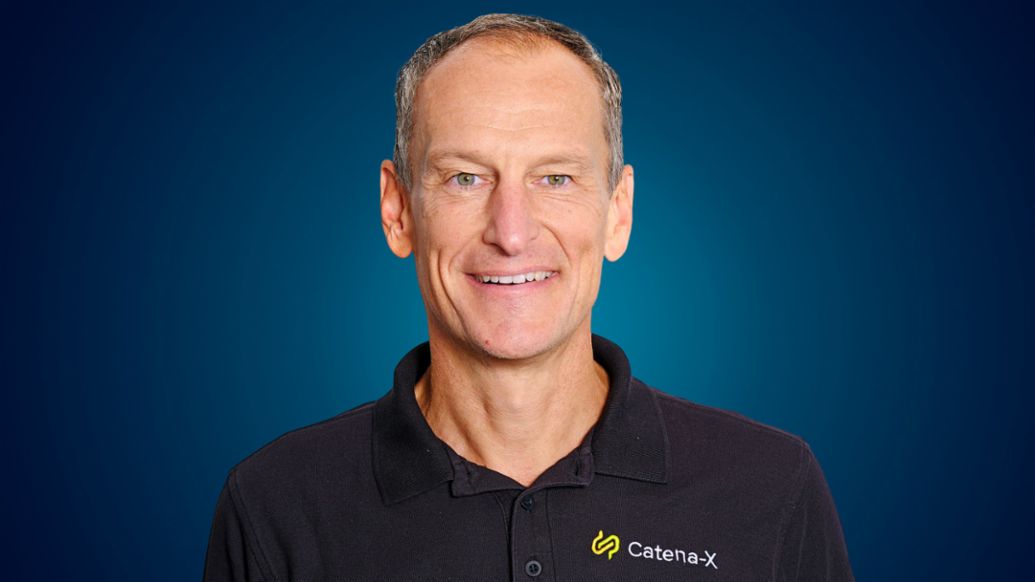
Frank Göller has traveled extensively over the past two years, with destinations including Tokyo, Shanghai, Beijing, and Seattle, not to mention three visits to Paris. His mission is to raise the profile of the Catena-X vision, bring out the network’s benefits, and gain new members. As Vice President Internationalization for the Catena-X Automotive Network, he wants to Europeanize what began as a system primarily for the German automotive and supplier context, and internationalize it further. The problem, he says, is that “many automotive decision-makers have yet to grasp the full potential of Catena-X.” These benefits need to be highlighted more strongly in Germany and beyond. “We still have a huge job to do,” he notes.
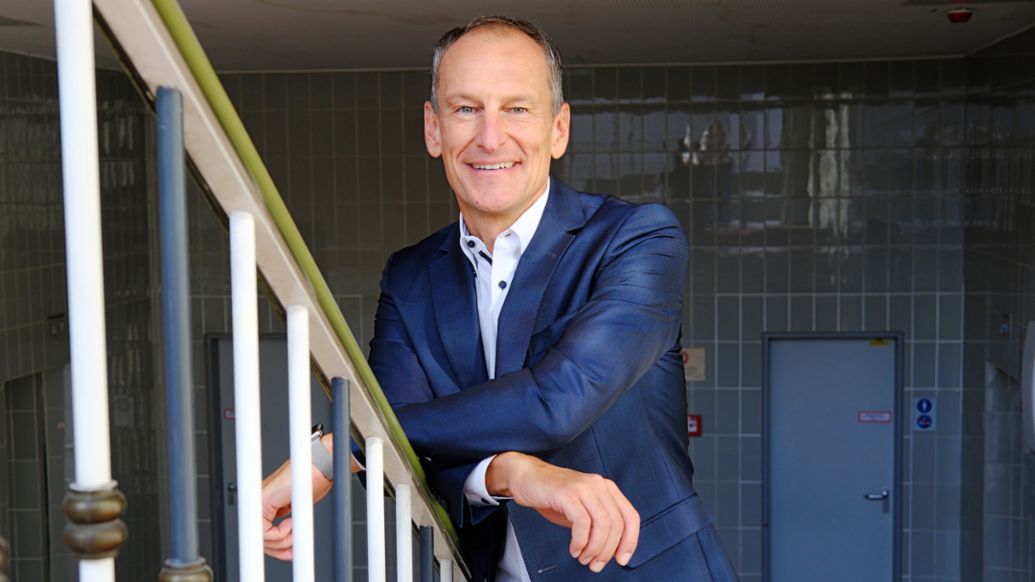
That being said, Göller and his team have accomplished a lot in a short period of time. Under his direction, the first European Catena‑X hub outside Germany was founded in France. It wasn’t easy to win over the French, says Göller. Their initial skepticism revolved around two points: first, how will companies retain complete control over their data at all times; and second, how will existing French structures combine with those of Catena‑X.
Regarding data control, Göller first held many discussions in Paris on standard definitions. His French colleagues were also interested in the use of blockchain technology and how to integrate existing material tracking applications. Göller and his team repeatedly emphasized the advantages of a decentralized data space and the principle of context-based access rights. “Those were the factors that ultimately convinced our colleagues to join the shared project,” he says. Göller also satisfied his French counterparts on the topic of connections with existing structures. “Our idea is precisely to create compatible interfaces for existing networks, and to build our network on this basis,” he explains. “Catena‑X is the network of networks.”
Welcome to the club of the willing
“We start by talking with the club of the willing”: this is Göller’s method and his term for those who are already open to the idea. In France, the first large partner to join the “club” was Stellantis with brands such as Peugeot and Citroën, but also Opel, Fiat, and Chrysler. Valeo, an important supplier that is also active internationally, joined shortly thereafter. The two companies are members of Galia, a major French automotive association headquartered in Boulogne-Billancourt. With Stellantis and Valeo as intermediaries, Göller had multiple meetings with Galia representatives in Paris. “The result we came up with satisfied everyone and generated visible synergies,” reports Göller. It also brought a new Catena‑X member, namely Renault. Today a Renault representative is active in Catena‑X as an elected member of the board.
The internationalization team is pursuing a similar, albeit not identical, course for important automotive markets in Asia. The focus is on Japan and China. Göller and a number of Catena‑X expert members visited Shanghai and Beijing in mid-2023, where they spoke with representatives from eight automotive associations and organizations within just four days. Most of their contacts came from superbly networked colleagues at Volkswagen China, but the strong presence of the German Chamber of Commerce and Industry (IHK) and the German Chamber of Industry Abroad (AHK) also opened doors in the Middle Kingdom. Nevertheless, Göller’s “German ideas” are also met with skepticism here too. “We keep having to explain that Catena‑X can only be successful on a global scale, and that all Germany did was get it started.”
European values carry weight in Asia as well
At the same time, those European values underlying Catena‑X are often a strong point in the network’s favor. “The data-sovereignty principle is a strong argument for non-Europeans as well,” Göller observes. It shouldn’t come as a surprise that the export-oriented Chinese companies are especially open to Catena‑X. After all, they too have to meet the legal requirements that already apply in Germany and will be Europe-wide as of 2024. “Many of our contacts quickly realized that Catena‑X can help them here.” These contacts are the ones currently engaged in the most active talks with the internationalization team. An alliance of the willing is expected to form in China soon too, with member companies such as Siemens, BMW, SAP, Huawei, and T‑Systems.
In Japan the team is a step further along. Intermediaries here included colleagues from the German software company SAP, which itself was one of the original Catena‑X members. Inspired by Catena‑X, the Japanese have been working on their own supply chain network known as Ouranos — and consequently already thinking of future collaboration with the Europeans. Here, too, the guiding principle is that of a “network of networks.” The only thing that counts is enabling data to flow smoothly from suppliers in Germany to OEMs in Japan, and the other way around. “Whether the network is later called ‘Catena‑X,’ ‘Ouranos,’ or ‘Let’s Share Data, Inc.’ doesn’t matter to us.”
Volkswagen’s expertise valued at Catena-X
Experience gained by Volkswagen is helping put Catena‑X into practice. The world’s largest carmaker began building its own successful internal digital production platform back in 2019. Its first step was to connect more than 100 sites with each other on a digital production platform (DPP). But determining end-to-end PCFs, or product carbon footprints, for its vehicles using a single industry-wide standard would have required the Group to connect with additional partners well beyond its own supplier network. “We were forced to realize the project was a little too big even for Volkswagen,” admits Göller.
Volkswagen’s experts contributed their knowledge as one of the first members of the association and also of the consortium. Together, within the circle of 28 partners, they developed the project’s initial software on an open-source basis. “That was when we really got excited about the big picture of Catena‑X,” recalls Göller.
Feeding the app
No one in the Group has regretted taking that step. The progress made in just two years by the Catena‑X partners has taken the wind from the sails of initial skeptics. Numerous apps are already available that can considerably enhance supply chain management, meet reporting requirements, and mitigate damage in future crises. With ever more users providing the data needed by the apps, Catena‑X is becoming ever more valuable to its community. In light of these rapid developments, Göller is certain that “Catena‑X will soon be able to identify facts and contexts that we even can’t even imagine today.”
Dr. Andreas Wollny: ”The shared ecosystem fascinated us right from the start”
.jpg/jcr:content/HG_Content_Wollny%20(1).jpg)
If every company wants its own platform, there’ll ultimately be no platform at all. Like many of his colleagues, Dr. Andreas Wollny, Senior Manager Digitalization at BASF, is familiar with this problem. He was all the more thrilled, therefore, when the incipient Catena-X consortium invited him in 2021 to work with the automotive industry in setting up a decentralized data system. “We had already thought about how we could gather cross-company data on matters like circular economies, sustainability, and product carbon footprints and share it with our customers — so we were extremely excited about the idea of a joint ecosystem.”

The digitalization expert was especially interested in two topics right from the start: the new platform should cover the entire automotive value chain, and it should be based on the key criterion of interoperability. The centrality of these two points reflects the special significance BASF has for the automotive industry and beyond. The globally active chemical company occupies various positions in the automotive supply chain. It is a tier 1 supplier, namely of top-level modules and systems, for products such as coatings. For battery chemicals and synthetic materials, it is positioned further down the value chain in the automotive supply sector, at tiers 2 to 5. The goal, of course, is to incorporate all of these points along the chain into the new data space.
Similar considerations are leading Wollny to place a greater emphasis on interoperability. “Because we’re active in many different industries, we want to be able to move data back and forth between different platforms,” he explains. The data therefore have to be compatible with other systems’ standards. That is precisely the point of interoperability.
The automotive industry as a blueprint for other sectors
One factor that fosters interoperability is the example Catena‑X is setting to an increasing degree for counterparts in related branches of industry. As Wollny observes in describing the development, “Catena‑X is already serving as a type of blueprint for other decentralized data ecosystems.” Its leading role is based in part on the shared approach taken early on by a number of automotive companies — and surely also on financial backing from the German Ministry for Economic Affairs and Climate Action. As Wollny explains, “Catena‑X gives Germany a new, scalable, future-oriented technology that will become ever more relevant both nationally and internationally in an increasing number of sectors.” The Manufacturing‑X and Health‑X data spaces, which have also been developed in Germany, are already utilizing principles developed by Wollny and his colleagues from the consortium.
Another benefit of Catena‑X is the enormous speed at which its operators are achieving their goals and interim targets. “More than 1,000 employees at 28 companies are working on it together in agile ways,” says Wollny. That admittedly requires an enormous amount of coordination. Yet the mutual trust arising from joint efforts by what are actually competitors has helped master many a challenge. The first prototype was ready sooner than anticipated. Assuming the upcoming “go live” is successful, signs will then point to expansion — “internationally as well as nationally with greater recruitment of smaller and medium-sized companies.”
Although Catena‑X has already made astonishing progress on European and other international levels, Wollny expects the challenge of increasing acceptance among smaller and medium-sized enterprises (SMEs) to continue. “We’re attending many events and trade fairs and holding a lot of individual talks these days, but the value chain still has gaps that we want to close,” he says. However, ever more decision-makers are realizing the advantages of no longer needing to draw their data from different platforms with different standards but instead being able to access it from a single space with a uniform standard.
BASF’s high aims for a circular economy
Wollny himself has higher aims for Catena‑X. BASF is especially interested in sustainability and product carbon footprints (PCFs). “We’re looking at the entire circular economy here,” he says, “starting with the raw material producers on one end of the chain and going all the way to recycling companies at the other.” When the data are gathered and analyzed, the idea is to share them with the market and customers. BASF is already working on a good solution here.
Wollny is especially proud of the Battery Passport, an app whose development BASF has guided with partners from Catena‑X. Once users download and integrate it into their systems, they can see the chemical composition of batteries at a glance. The app can also show battery status. As Wollny notes, “The data are all the more important toward the end of battery life cycles when recyclers have to determine whether they can be reused or reprocessed.” Thanks to Wollny and his consortium, a check of the Battery Passport will soon be all that is needed.
Commentary by Ole Sassenroth:
Generating transparency — Not only during crises
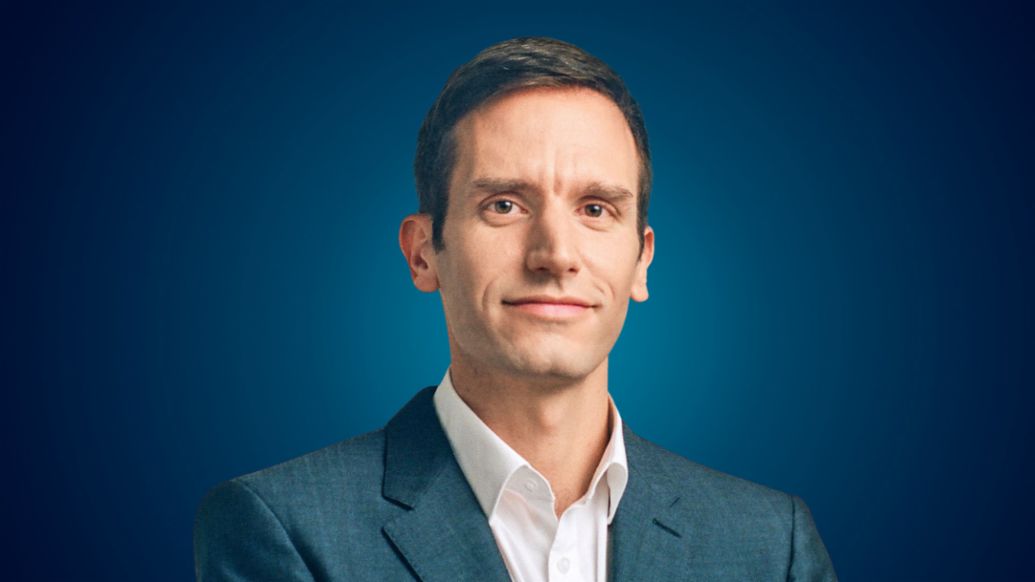
Shortages and crises are showing European industry how vulnerable companies are if their suppliers suddenly fail or transport issues interrupt the flow of goods. For example, if semiconductors or cable harnesses cannot be delivered, entire production halls have to shut down. Calmer times are probably not on the horizon for Europe and its economies. Resilience is therefore the order of the day — and to increase resilience, supply chains need to be transparent.
With Catena-X, the German automotive industry has developed a suitable model that runs on principles all companies can agree upon. The ecosystem’s appeal is also clear from the great interest arising in other sectors — even before the actual market launch of Catena-X at the end of 2023.
The high level of interest is only to be expected because with Catena-X, the supply chain will no longer be an Achilles heel. Tools from the marketplace app will show in real time at the press of a button which suppliers have the capacities to fill gaps that arise in logistics chains. This in turn can reduce or even prevent losses in production.
Major market players who have found out the hard way about the costs that accrue when production lines stop for even a single day are already playing an active role in Catena-X. Regardless of any crises to master, they also benefit in their everyday operations. By using this shared data ecosystem, they can lower costs, accelerate processes, raise product quality, and obtain the data that help them meet sustainability legal requirements as well as their own internal aims.
In short, a trans-sector industrial network generates value for its users at all times. Collaboration-based models benefit international corporations, medium-sized enterprises, and small-scale specialists alike. The solid groundwork laid by the Catena-X consortium can significantly reduce the technical and administrative effort needed to build similar networks in other manufacturing sectors.
Info
Text first published in Porsche Consulting Magazine.


